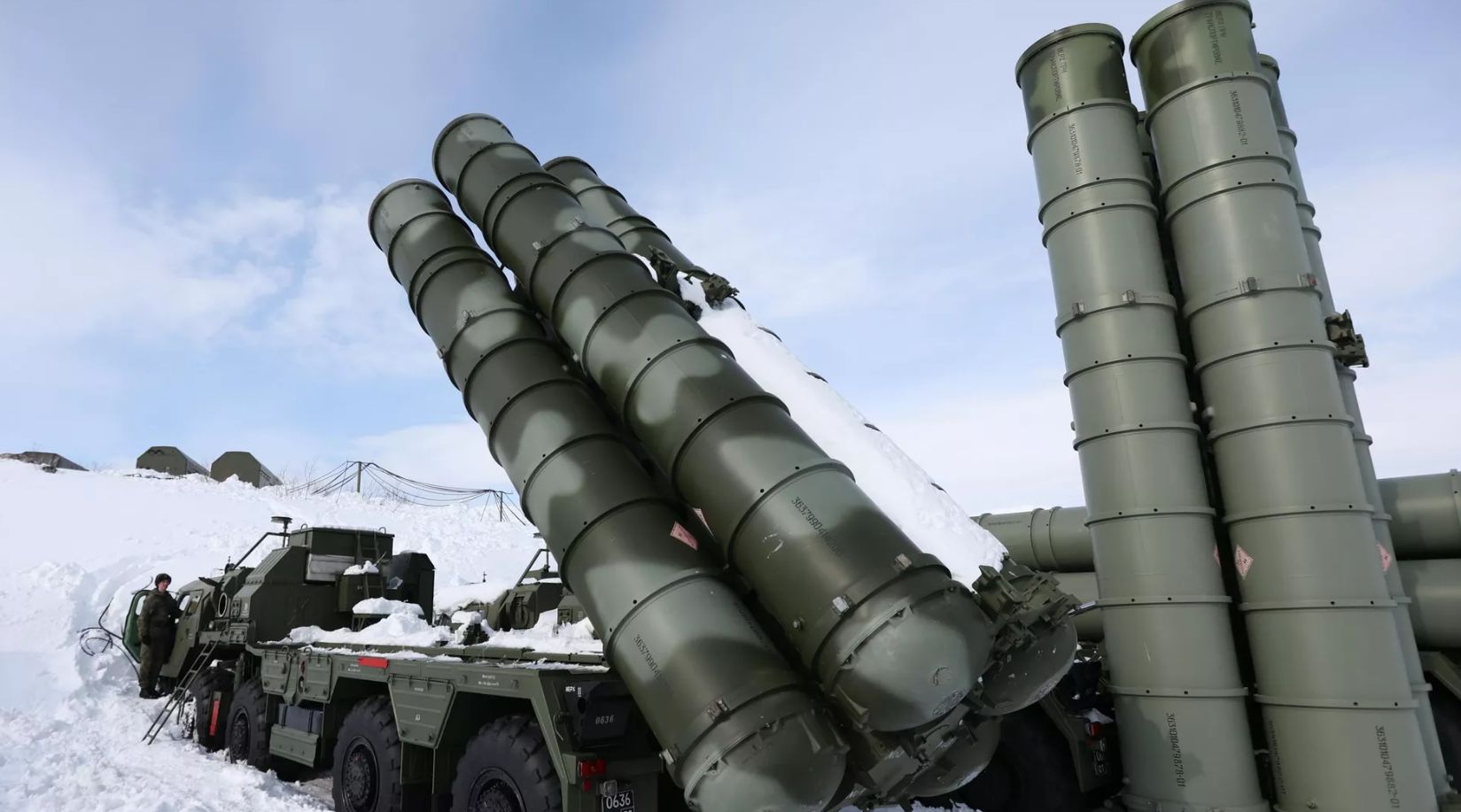Russia has claimed that the ongoing ‘special military operations’ in Ukraine have exposed a significant flaw in Western air defense systems.
According to Russian claims, these systems are purportedly plagued by an almost 100% failure rate in intercepting ballistic missiles.
The head of Rosoboronexport, the state agency overseeing Russia’s defense exports, said during the World Defense Show 2024 in Saudi Arabia.
The company actively promotes its state-of-the-art S-400 air defense system in the Middle East. Alexander Mikheyev, CEO of the Rosoboronexport, emphasized the ‘superiority’ of the S-400 Triumph air defense system over its Western counterparts.
“The S-400 Triumph is the best long-range air defense system in the world today. Rosoboronexport is constantly working to promote this anti-aircraft missile system to partners from the Middle East, who are showing increased interest in protecting their territories and important infrastructure facilities from the air threat,” he said.
Mikheyev stated that the S-400 Triumph had proven its capability to successfully destroy both aerodynamic and ballistic missiles in actual combat situations, contrasting the reported shortcomings of Western air defense systems.

Highlighting the S-400 Triumph’s features, Mikheyev described it as the best long-range air defense system globally, with the ability to engage aerodynamic targets up to 400 km away and tactical ballistic targets, including cruise missiles and ballistic missile warheads at distances of up to 60 km.
The system’s radar can detect air targets up to 600 km away, while its guided antiaircraft missiles, such as the 48N6E3, can target aerodynamic and ballistic threats at varying altitudes.
In light of the experiences gained from the ongoing conflict in Ukraine, Russia contends that modern Western air defense systems consistently fall short in intercepting ballistic targets.
“The experience of the special military operation demonstrated that modern western air defense systems miss ballistic targets in practically 100% of cases,” according to Mikheyev.
However, the head of Rosoboronexport refrained from explicitly naming any particular Western air defense system while asserting the reported shortcomings.
The absence of specific mentions in this regard makes the claim more generalized and focused on the overall purported inadequacy of contemporary Western air defense systems in the ongoing conflict.
Western Versus Russian Air Defense Systems
One of the pivotal determinants shaping the perceived effectiveness of air defense systems lies in each country’s distinctive design philosophies and strategic objectives.
Western and Russian systems are tailored with different considerations, including the types of anticipated threats and overarching military doctrines.
Historically, Russia, tracing back to the Soviet Union, has focused on integrated air defense systems engineered to counter various threats, including high-flying strategic bombers and cruise missiles.
In contrast, Western air defense systems, particularly those within NATO member countries, often adopt a more distributed approach.
The NATO architecture incorporates interoperable national systems, emphasizing collaborative efforts for a comprehensive defense among diverse components. This approach may be perceived as less centralized compared to its Russian counterpart.
Addressing assertions by the CEO of Rosoboronexport claiming an almost 100% failure rate in intercepting ballistic targets by Western air defense systems, historical incidents warrant consideration.
Notably, in 1991, during Operation Desert Storm, a US-made Patriot defense system failed to intercept a Scud tactical ballistic missile, raising questions about its efficacy.
However, after that occurrence, the United States has enhanced the Patriot system through numerous upgrades.
In contrast to the challenges faced during Desert Storm, the Patriot interceptors demonstrated a notable improvement in performance during the 2003 Operation Iraqi Freedom. Since 2015, Patriot interceptors successfully neutralized many missiles and drones in the Yemen Missile War.
Deadlier Than Hypersonic Weapon, Why Ukraine Fears Russia’s Kh-22 Missiles More Than Kinzhals?
Even amidst the current conflict in Ukraine, the system has received praise for reportedly intercepting Russian hypersonic missiles. However, several experts dismiss this as a purported fabrication crafted to promote Western air defense systems in the international market.
Additionally, Kyiv has admitted that its air defense units, including the ‘mighty’ Patriots, have been ineffective in intercepting any of the Kh-22 supersonic cruise missiles directed at its cities
Since the full-scale invasion, Russian forces have launched around 300 Kh-22 missiles at Ukraine. Notably, all defense systems have not been able to challenge these projectiles. Read why Ukraine really fears Kh-22 more than hypersonic missiles.
- Contact the author at ashishmichel(at)gmail.com
- Follow EurAsian Times on Google News